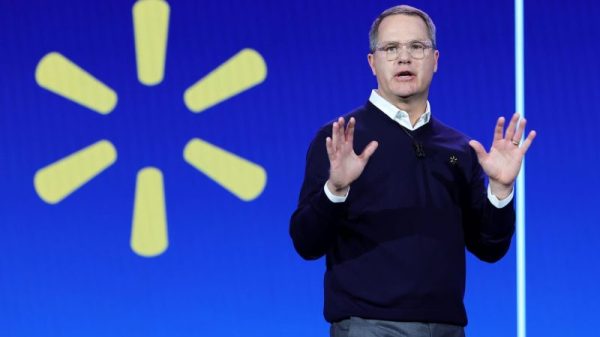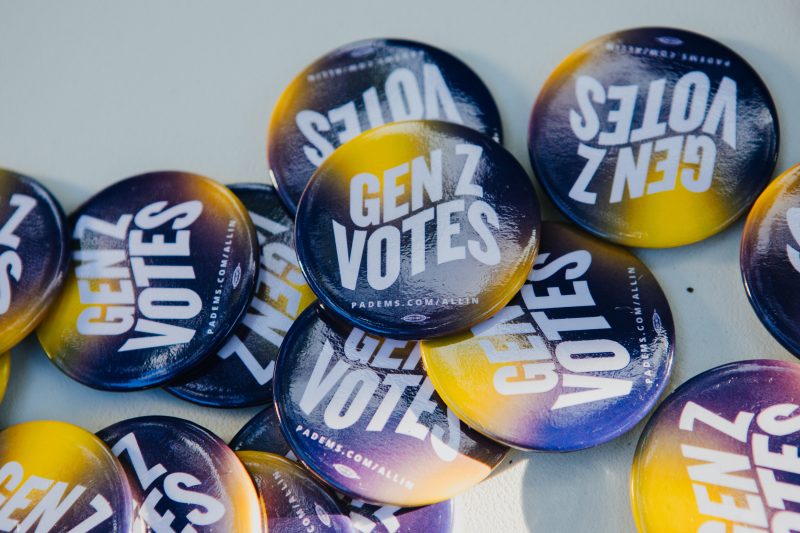Young voters helped power President Biden and the Democrats to victory in 2020 and were an integral part of the party’s success in preventing a red wave for Republicans in 2022. Right now, it’s questionable whether they will do the same in 2024.
Biden’s reelection hopes depend on his ability to reassemble the coalition that elected him in 2020. Through much of 2023, however, that coalition has been splintering, and it faces new strains over immigration and the war in the Middle East.
Young voters — especially young Black and Hispanic Americans — have shown signs of unease toward Biden. Maybe this is a transitory phenomenon, one that as the election approaches will begin to fade as these voters, alarmed at the possibility of another Trump presidency, return to the Democratic fold.
But nothing is assured. The number of young people who turn out in 2024 — and the number of them who support Biden over the former president, if Donald Trump is the Republican nominee — will help decide the overall outcome. In states like Georgia, Wisconsin and Arizona, which in 2020 were decided by only a few thousand votes, young voters are critically important to Biden’s hopes of carrying those states again.
Doug Sosnik, a veteran Democratic strategist who served in the Clinton administration, made an observation recently in his year-end analysis of the political landscape. Biden, he wrote, was the first president since George H.W. Bush in 1988 to win election “without a political base of his own.”
Sosnik based this assertion on the fact that, among those voters in 2020 who said they had cast a vote for their candidate, Trump led Biden by 19 points, according to exit polls by AP VoteCast. But among those who voted against someone, Biden led by 44 points. Biden, in other words, benefited enormously from hostility toward Trump.
It’s not that Biden truly has no base. Black voters saved his candidacy in South Carolina during the 2020 primaries, and they and some other groups have been loyal and essential to Democratic success. But Sosnik is correct that fear of Trump more than affection for Biden was the key to what happened in 2020. The same can be said about the Democrats’ victory in the 2018 midterms and their successes in avoiding a drubbing in 2022.
Signs of disaffection among younger voters have been showing up through the later part of 2023 in a variety of surveys. The most recent Harvard Youth Poll, conducted by the Harvard Kennedy School Institute of Politics, offered several warning signs for the president and his reelection team, along with an occasional bright spot. (Full disclosure: I am a senior fellow at the Institute of Politics.)
Among the bright spots is that the more likely they are to vote, the more young people say they support Biden over Trump. Among all young people, Biden leads Trump by 11 percentage points. Among young likely voters, the margin in the survey is 24 points. But 69 percent said they were supporting Biden to oppose Trump, while 65 percent of those backing Trump said it reflected support for the former president and his positions on issues.
Another warning sign: The survey found that the percentage of young people ages 18-29 who said they definitely plan to vote in 2024 is lower than in 2020. One possible comfort to the Democrats is that there is greater falloff in voting intentions among young people who identify as Republicans or independents than among those who say they are Democrats. But much else in the poll should be of concern to Democrats.
Across racial groups, the drop in voting intentions is most pronounced among young Black and young Hispanic voters. At this point in 2019, 50 percent of young Black Americans said they intended to vote; this year it’s 38 percent. Among young Hispanic Americans, the drop-off is larger, from 56 percent saying they intended to vote at this point in 2019 to 40 percent today.
John Della Volpe, director of polling at the IOP, who works with students on projects, said that what is most notable to him in the recent survey is the growing tendency of young Black Americans and young Hispanic Americans to dissociate themselves from the Democratic Party.
In 2019, 64 percent of young Black Americans said they considered themselves Democrats. By this past spring, that number had fallen to 49 percent, with the bulk going to independents and a fraction to Republicans. Among young Hispanic Americans, the falloff is less significant but still moving in the wrong direction for Democrats. Identification with Democrats among these young Hispanics is down 6 points, while Republican identification is up 4 points.
“The Biden team should be most concerned about the growing number of young progressive people — especially young POC [people of color] — who are disassociating with the Dem party and choosing independent status, despite largely agreeing with the party’s ideology, priorities and platform,” he wrote in an email.
Part of this may reflect growing disillusionment with the capacity of the political system to address problems that are especially important to younger people, such as gun laws or climate or immigration.
Among young Black Americans ages 18-29, the percentage who say “politics today are no longer able to meet the challenges our country is facing” has risen from 36 percent in late 2019 to 52 percent as of this past spring. Among young Hispanics, the number has grown from 43 percent to 56 percent.
Della Volpe pointed out that part of the problem is that, like voters of all ages, younger voters are not aware of things Biden has done that benefit them, from student debt relief to investments in climate initiatives. What might have been an opportunity for Biden and Democrats to expand the youthful coalition has been going in the opposite direction.
Cornell Belcher, a Democratic pollster who was part of Barack Obama’s 2008 campaign team, said that, in thinking about younger Americans of color, Democrats are dealing with what he called “the Obama continuum.” That 2008 campaign, he said, attracted many younger voters who were not necessarily Democrats but were better described as Obama voters. Like Della Volpe, he, too, sees them as particularly dissatisfied with politics and not seeing leaders fighting effectively for change.
He said Biden has a good story to tell about his accomplishments, even if the president and his allies have been singularly unsuccessful in selling that to voters of all ages. But many young voters also find it difficult to connect personally with the 81-year-old president and aren’t sure he’s up to the fight ahead.
“Likability is really, really important in politics and even when they were not happy with something Obama did, they still liked him and had his back,” Belcher wrote in the email. He added that the challenge for Biden is to find a way to sell his accomplishments “to soften some of the anger and disillusionment and perhaps inoculate some of the more personal questions about him being a fighter up to the job.”
At the same time, he said, the president must persuade these younger voters to pivot away from seeing the election strictly in those terms and to focus instead on Trump and the threat he poses to their communities. “Look these young voters are not happy with Dems and Biden but Trump and the GOP are fundamentally mispositioned to win them over,” he wrote.
Young voters are just one of the constituencies Biden must mobilize in the coming year. But he and they are both in different places than they were four years ago, and that represents the challenge for the president.



























